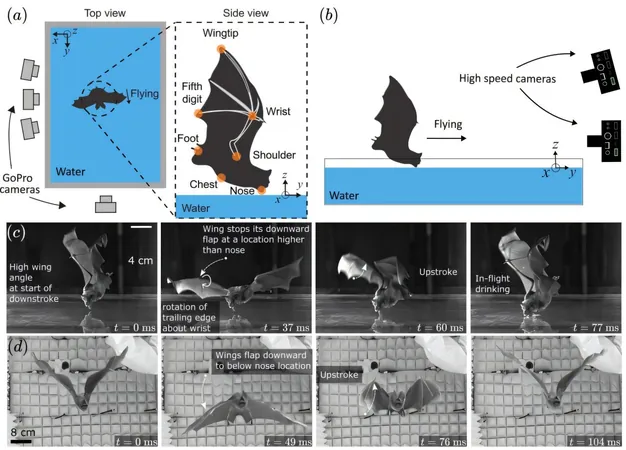
Is the Moon’s Far Side Thirsty? Groundbreaking Discovery Reveals Water Variations!
2025-04-09
Author: Mei
Unearthing Lunar Mysteries: The Far Side vs. The Near Side
The far side of the Moon, the mysterious land that remains hidden from Earth's view, is not just different in appearance; it is believed to have distinct geological features. Researchers suggest that this side could be significantly drier than the Moon’s closer, familiar face, revealing secrets of our celestial neighbor that have been masked for ages.
Chinese Research Unveils Surprising Findings
In a groundbreaking study published in the journal Nature, Chinese scientists revealed insights based on a lunar sample collected during the Chang'e-6 mission, which marked the first return of materials from the Moon’s far side. This discovery offers a deeper understanding of the Moon's formation and evolution over billions of years.
Hydration Levels: A Tale of Two Moons?
The study indicates a fascinating correlation between the Moon's contrasting surface features and their water content. "It’s intriguing," said researcher Sen Hu from the Chinese Academy of Sciences. Recent lunar research has dramatically shifted our perception of the Moon from 'bone dry' to a realm with hidden water resources, particularly following NASA's findings from 2009.
Sample Exploration: What Chang'e-6 Revealed
The Chang'e-6 mission, part of China's ambitious lunar exploration program, collected over four pounds of regolith from the South Pole-Aitken basin. This region is not only the deepest crater on the Moon but is also key to understanding the Moon's history, enriched with samples that are over 2.8 billion years old!
Rethinking Water Content on the Moon
Scientists found that the lunar mantle beneath the far side's crust contains only 1 to 1.5 grams of water per million grams of rock, drastically drier compared to previous near side findings, which suggest it could be up to 200 times wetter. This stark contrast opens a new chapter in lunar geology.
Hypotheses on Water Distribution
To explain these differences, the Chang'e-6 team proposed that the gigantic impact that formed the South Pole-Aitken basin might have scattered water and other materials to the near side, leaving the far side relatively parched. Another theory posits that the sampled basalts originate from a much drier region deep within the Moon's mantle.
The Road Ahead: More Research Needed!
While the findings are intriguing, experts like Shuai Li from the University of Hawaii emphasize caution, noting that a single sample provides limited insight. Future lunar missions and additional samples will be crucial to drawing definitive conclusions about the water distribution across the Moon's surface.
A New Era in Lunar Exploration!
As scientists prepare for more explorations, this new understanding of the Moon's geography could potentially redefine our approach to studying not only our lunar neighbor but also other celestial bodies in our solar system. Will we discover even more secrets from the depths of the Moon? The journey is just beginning!



 Brasil (PT)
Brasil (PT)
 Canada (EN)
Canada (EN)
 Chile (ES)
Chile (ES)
 Česko (CS)
Česko (CS)
 대한민국 (KO)
대한민국 (KO)
 España (ES)
España (ES)
 France (FR)
France (FR)
 Hong Kong (EN)
Hong Kong (EN)
 Italia (IT)
Italia (IT)
 日本 (JA)
日本 (JA)
 Magyarország (HU)
Magyarország (HU)
 Norge (NO)
Norge (NO)
 Polska (PL)
Polska (PL)
 Schweiz (DE)
Schweiz (DE)
 Singapore (EN)
Singapore (EN)
 Sverige (SV)
Sverige (SV)
 Suomi (FI)
Suomi (FI)
 Türkiye (TR)
Türkiye (TR)
 الإمارات العربية المتحدة (AR)
الإمارات العربية المتحدة (AR)